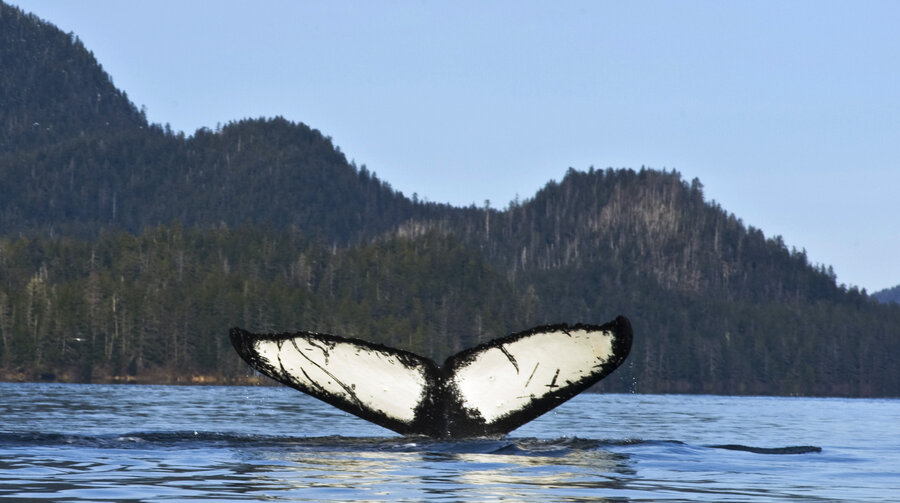What is known about the mysterious beaked whale found in Alaska?
Japanese whalers had long spoken of the mysterious “karasu,” or raven whales, found in the North Pacific waters, but there were no videos or photos. A few tissue samples with funny differences from known beaked whale DNA existed, but nothing concrete to suggest that there was truly an unknown whale species out there, probing the depths of the ocean and breaching its surface.
That is until one summer day in 2014, when a whale washed up on the shores of St. George Island, a sparsely populated island in the Bering Sea that hangs some 200 miles north of the string of Alaskan islands that stretch toward Russia.
The beaked whale was about 24-feet long and covered in scars, but clearly a deep, dark black color with a uniquely curved dorsal fin. Biologist Christian Hagenlocher discovered the whale carcass while birdwatching and told local environmental educator Karin Holser, who reported the unidentifiable whale. That sent Juneau-based biologist Michelle Ridgway out to take a look, the Alaska Dispatch News reports.
To Ms. Ridgway, it looked like the well-known Baird's beaked whale, but with some crucial differences – for one its size was much smaller than a typical adult and its skin darker, and for another that the curvatures of its dorsal fin didn’t match what she would expect to see on the Baird’s beaked whale.
"The whale did not match descriptions for the Baird's," Ridgway told local NBC affiliate KTUU. "Nor did it match the Stejneger's beaked whale, or any beaked whale described anywhere."
A sample of the mysterious whale tissue was sent to the National Oceanic and Atmospheric Administration’s Southwest Fisheries Science Center in California, which has a catalogue of whale tissue. There, DNA analysis showed that this whale was distinctive from its relatives.
That information, coupled with the actual observations of the carcass that washed up on St. George Island, provided scientists enough evidence to declare that this whale is part of an elusive new species – a discovery that was announced in a paper published Tuesday in the journal Marine Mammal Science.
This was not the first time that questions had arisen about mysterious traits in certain beaked whales; a previous analysis, published in 2013, of DNA from eight tissue specimens from Japanese and Alaskan waters had pointed to a DNA variation in whale tissue samples. Such an observation could suggest either DNA variation within one species or maybe even a distinct species, but there was no evidence to make that latter statement.
At least not yet.
But this time, a collaboration between local students and tribal elders, Alaskan and international scientists and the presence of a full body of the whale in question enabled researchers to make a definitive case for its species-hood.
The findings have revealed that evidence of the whale already existed – a whale skeleton in a nearby high school belongs to the species, as does another at the Smithsonian.
But now these remnants can be seen in context, as part of new species.
While little is known about the new species, still unnamed, Phillip Morin, a research molecular geneticist at the Southwest Fisheries Science Center and lead author of the study, told the Alaska Dispatch News that it probably lives off the continental shelf where, like other beaked whales, it can plunge to depths of 3,000 feet to feed on squid. Bite marks on the whale that appear to match tropical sharks might suggest that these creatures travel great distances.
But apart from these details, little else is known about the whale's life and habits.
“Clearly this species is very rare,” Dr. Morin said, quoted by KTUU, “and reminds us how much we have to learn about the ocean and even some of its largest inhabitants.”
This post was updated to include the name of the biologist who discovered the whale body after it washed ashore.







